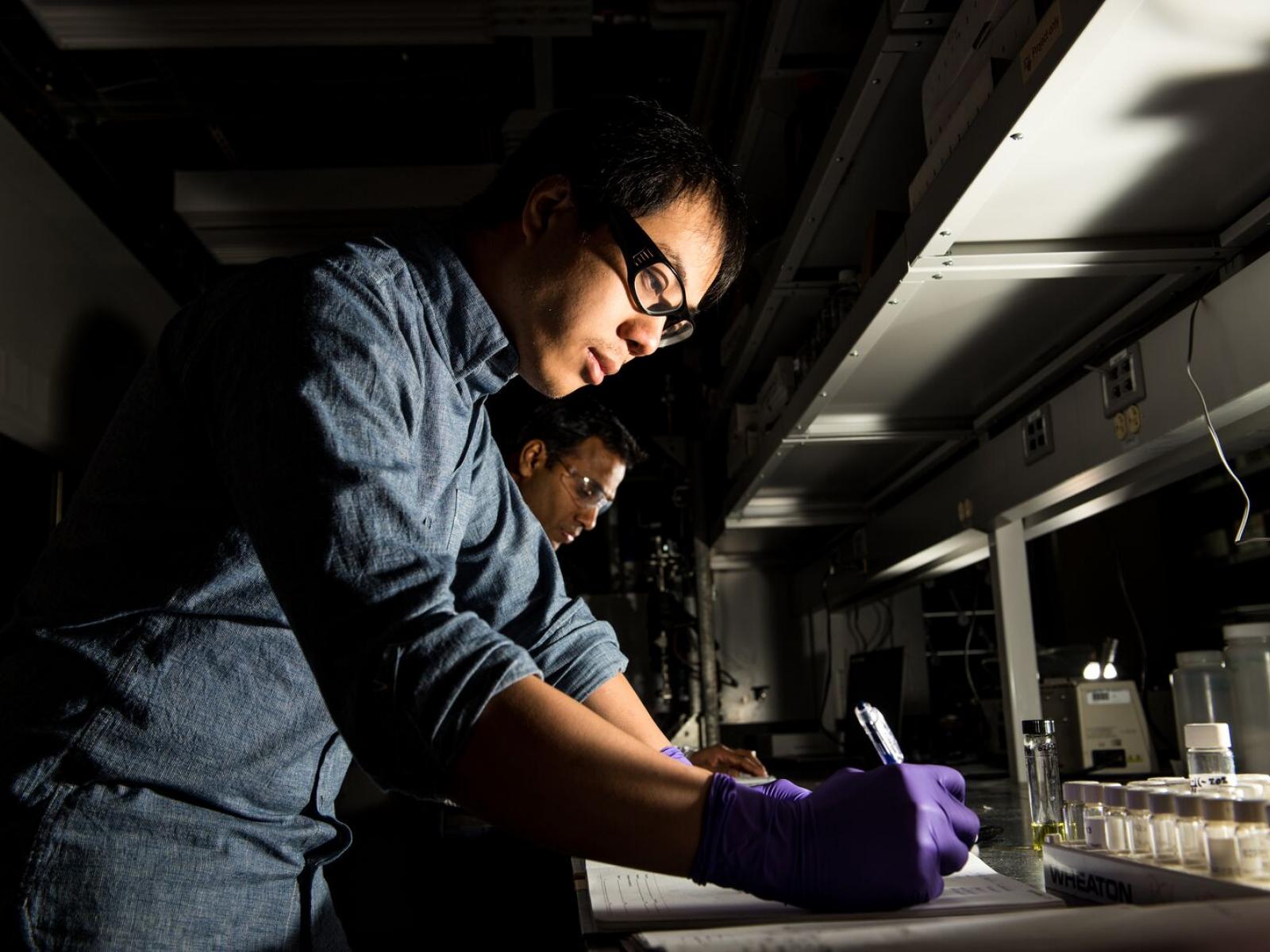Though we usually think of ethanol as fuel for the gas tank, it can also be transformed into valuable chemicals that could help replace a variety of petroleum-based products beyond just gasoline. However, evolving ethanol for a broader range of industries requires chemical processes that are more efficient than what is available today.
Scientists at Pacific Northwest National Laboratory (PNNL) have developed a novel catalyst that converts ethanol into C5+ ketones that can serve as building blocks for everything from solvents to jet fuel. In a new paper, they describe this breakthrough chemistry and the mechanism behind it.
One-pot upgrading ethanol to C5+ ketones
Catalysts are necessary to accelerate chemical transformations that convert ethanol to other compounds. To be commercially viable, a catalyst must be highly active while still selectively generating the desired chemical products—in other words, it must reliably churn out the exact material sought. Scientists seek catalysts for ethanol that can spin off the right compounds efficiently and do so repeatedly. In chemistries that require numerous reaction steps in a long cascade of chemical reactions toward the final end product, this can be a tall order.
The catalyst developed at PNNL condenses multiple reactions into a single step. Ethanol meets the catalyst under high temperature (370°C, or 698°F) and pressure (300 pounds per square inch). It then rapidly converts to products containing more than 70 percent C5+ ketones. The catalyst also appears robust, remaining stable over 2,000 hours of use. The end goal is to have a catalyst that can last for 2 to 5 years.
For their research, the scientists combined zinc oxide and zirconium dioxide for the catalyst. Such mixed-oxide catalysts don’t usually achieve such selectivity, spinning off too many unwanted byproducts instead.
But the researchers added another key ingredient to the mix: palladium. During the process, palladium and zinc formed an alloy that behaved very differently from its constituent parts, catalyzing only the necessary reaction steps that lead to the formation of C5+ ketones.
“What’s novel is producing these ketones by forming the alloy between palladium and zinc during the reaction,” said Karthi Ramasamy, study co-author and senior research engineer at PNNL. “So many intermediate steps all happen on this one catalyst—each step requires a different component of the catalyst to activate it.”
One catalyst, flexible operation
The catalyst can be used to make 2-pentanone and/or 2-heptanone, which are used in solvents for the electronics industry and are usually derived from petroleum. C5+ ketones can also serve as intermediates to produce fuel blendstock, lubricants, jet fuel, and diesel fuel. Generating such products from renewable ethanol rather than fossil resources could help cut greenhouse gas emissions and boost energy security.
“This catalyst is very flexible,” Ramasamy said. “We can make adjustments to the operating conditions, such as temperature and pressure, to attain the desired product composition.”
The process is further detailed in the paper “Direct Catalytic Conversion of Ethanol to C5+ Ketones: Role of Pd–Zn Alloy on Catalytic Activity and Stability,” published in the journal Angewandte Chemie International Edition. Ramasamy’s co-authors are Senthil Subramaniam, Mond F. Guo, Michel Gray, Abraham Martinez, Libor Kovarik at PNNL; Xiao Zhang at Washington State University; and Tanmayi Bathena, Konstantinos A. Goulas at Oregon State University.
The technology for converting ethanol to ketones is available for licensing from PNNL’s commercialization office. For more information, contact Allan Tuan.
This research was funded by the Laboratory Directed Research and Development program at PNNL and U.S. Department of Energy (DOE) Co-Optimization of Fuels & Engines (Co-Optima) initiative, which focuses on how simultaneous innovations in fuels and engines can improve fuel economy and vehicle performance while also reducing emissions. Sponsored by the DOE Office of Energy Efficiency and Renewable Energy’s Vehicle Technologies Office and Bioenergy Technologies Office, Co-Optima partners include nine national laboratories, as well as more than 20 university and industry partners.
